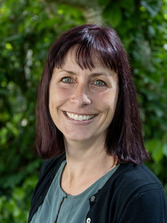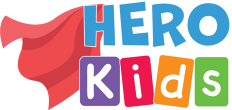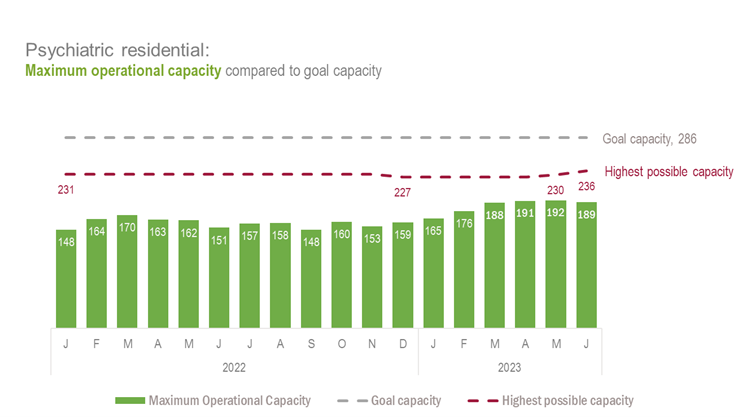|
Having trouble viewing this email? View it as a Web page.
Lea en español
Aug. 1, 2023
In this issue ...
Reflections from Oregon Health Authority's Child and Family Behavioral Health Director

Summer is almost over. August promises to be very warm, inspiring trips to the coast and beach-filled days. Summer also marks the end of the 2023 legislative session and the start of back-to-school season.
The 2023-2025 Oregon Health Authority (OHA) state budget not only funds new investments, it also marks the passage of many bills that will advance health and health equity. Some important highlights for Child and Family Behavioral Health (CFBH) include:
|
- A tax to fund 988 Suicide and Crisis Lifeline services.
- House Bill 2767 which requires establishing nine recovery high schools in Oregon over the next six years. (See the article below for more details).
There is still more work to do to achieve health equity and provide the supports Oregon children and families need. CFBH will continue to advocate for the services and benefits our communities need.
When schools closed for the summer, thousands of Oregon children lost access to breakfast, lunch, and afterschool meals. During the school year many rely on these meals to supplement what is available at home. The Summer Food Service Program offers access to free nutritious meals. To find locations near you:
The program offers free meals and enrichment activities at more than 650 locations throughout the state. These include many schools, parks, and other non-profit organizations.
May the last days of summer be filled with sunshine, and may the return to school be filled with the support that families need to thrive.
In July, the 988 Suicide and Crisis Lifeline (988) celebrated its one-year anniversary. 988 connects callers experiencing a mental or behavioral health crisis with a trained counselor. In Oregon, two nonprofits answer calls from Oregon area codes:
- Lines for Life, which serves people statewide, and
- Northwest Human Services, which serves area codes from Marion and Polk Counties.
Oregon’s crisis call centers answered more than 53,000 calls, texts and chats between July 16, 2022, and June 30, 2023. This reflects a 33% increase in call volume since the nationwide transition to 988.
July 13, the federal government also announced the addition of Spanish text and chat services to 988. People who speak Spanish can now connect directly to Spanish-speaking crisis counselors by:
In addition to answering calls, text and chats in English or Spanish, 988 offers interpretation services in more than 250 languages. 988 is available to help people or their loved ones in any type of behavioral health crisis, such as:
- Mental health-related distress,
- Thoughts of suicide or self-harm, or
- Substance use crisis.
House Bill 2757 (2023) makes a giant step toward sustainable funding for 988. The Legislature approved adding a 40-cent monthly tax to most cell phone bills, starting Jan. 1, 2024. This tax is expected to generate nearly $33 million in Oregon’s current two-year budget. The tax will help to fully fund the 988 call centers and remaining funds will be used for mobile crisis services.
988 counselors can ask for in-person help if the caller needs or asks for it. But often the call, text or chat is all people need to get through their crisis. In Oregon, 988 resolves or de-escalates nearly 97% of calls over the phone. 988 can also connect callers with:
- A school counselor,
- Their own insurance or employee assistance program or
- A list of mental health providers.
Other times, just talking with friends or family will resolve the crisis, getting them on the path to recovery and support.
If you or someone you know is struggling or in crisis, help is available. Call or text 988 or chat 988lifeline.org.
House Bill 2767 (2023) guarantees that eight recovery high schools will open across Oregon within the next six years. Recovery high schools are specifically for students in recovery from substance use disorder (SUD) or co-occurring disorders. This legislation will create schools that:
- Empower at-risk students to thrive and
- Ensure that students in recovery earn school credits leading to a state-recognized high school diploma.
Oregon currently has one fully functioning recovery high school in Clackamas County. Harmony Academy Recovery High operates as a charter school in Lake Oswego. Rivercrest Recovery High in Multnomah County plans to open this fall. The Friends of Lane County Recovery School, a non-profit in Eugene, is in the planning stage.
Each school will operate differently depending on available community resources. But state standards will ensure each school has the same common goals:
- Educate and support students in recovery.
- Meet state requirements for awarding a high school diploma. This means that the school itself offers credits. Students do not need to be tutored or complete work from another school.
- Serve students in recovery.
- All students work an abstinence-focused program of recovery as agreed upon by the student and the school.
Bernardino De La Torre is CFBH’s Youth and Young Adult SUD Program Policy Coordinator. Bernardino said, “Having recovery high schools under the Oregon Department of Education (ODE) state budget will put these schools on the same level as all state schools. Sustainable funding will ensure a higher success rate for the schools and youth they serve.
“We expect these schools will be able to serve a more culturally diverse youth population. Many equity pieces are woven through the bill. One important equity piece is having schools in rural and frontier regions. Having nine recovery schools across the state will establish resources in areas that really need it.”
ODE will use the State School Fund to create and fund these schools. An advisory committee will oversee both the current school and future schools. This committee will include:
- One member each from ODE Youth Development Division, the Alcohol and Drug Policy Commission and OHA.
- A family member/caregiver.
- A youth with lived experience in SUD.
- A school administrator.
- Three members with experience in establishing or operating recovery schools.
Senate Bill (SB) 819 (2023) will help end the practice of shortening school days for more than 1,000 Oregon students with disabilities. This ensures that all of Oregon’s children have equal access to education. With the passage of this bill:
-
Parents/guardians will receive notice specifically about shortened days for their child. The notice will explain their right to consent to the shortened day. It will also explain how to revoke consent, or oppose, the shortened day.
-
Schools will have to meet regularly with parents/guardians about whether to continue shortened school days.
-
Schools will have to make a consistent support plan for the student’s shortened day. They will also have to make a support plan for when the student returns to full-time school.
-
A clear legal framework will hold ODE accountable for working toward eliminating frequent and long-term shortened school days.
ODE now offers the following information sessions about SB 819. These are the direct Zoom links for joining the meeting at the times listed below. We recommend adding the link to your calendar:
These sessions will take around two hours. The remaining time can be for questions.
If you have any questions or need additional support to join a session, please contact Jeremy Wells, Education Specialist at ODE: jeremy.wells@ode.oregon.gov.

In an emergency, every moment counts. HERO Kids is a voluntary, no-cost, secure registry that lets families and young adults record critical health details that first responders and hospital emergency department providers can quickly and easily access.
For emergency medical providers faced with split-second decisions the HERO Kids Registry can fill the information gap. The Registry was designed by parents and medical professionals working together to improve the emergency medical experience for any Oregon child or young adult through the age of 26.
Presentations, Frequently Asked Questions, and more can be found at the HERO Kids Website and you can email herokids@ohsu.edu with any questions.
|
Clinical consultation on intellectual/ developmental disability (I/DD) and mental health – Change to monthly meeting date
OHA sponsors a monthly clinical consultation with experts from the National Association of Dually Diagnosed (NADD). The consultation focuses on supporting youth and families dually diagnosed with an I/DD and mental health condition. This a great time for clinicians or other professionals to get consultation about best practice for supporting dually diagnosed youth and their families.
We originally scheduled these calls for the second Thursday of the month. Instead, they are now held on the third Thursday of each month.
Join us Thursday, August 17 from 1 to 2:30 p.m.
Meeting ID: 294 301 803 522 Passcode: hzsLSE
- Join by phone (audio only): 971-277-2343 then 531655908#
- Topic: First Symptoms—How to recognize emerging mental health conditions for youth with an IDD
Upcoming consultation dates:
For more information, questions, or to submit a consultation request, please contact Jessica Stout at jessica.l.stout@oha.oregon.gov.
Chelsea Holcomb and System of Care Policy Strategist Hilary Harrison will hold two community conversations in August.
These are opportunities for providers, community members, youth and family to engage with OHA and have conversations around topics.
This month these will focus on the continuum of care: What’s new, where are the concerns and what next?
Join the August 2 ZoomGov meeting
- Time: August 2, 2 to 3:30 p.m.
- Meeting ID: 160 688 0357, Passcode: 342989
- Dial in: (669) 254 5252
Join the August 17 ZoomGov meeting
- Time: August 17, 5 to 6:30 p.m.
- Meeting ID: 160 752 6471, Passcode: 105841
- Dial in: (669) 254 5252
This group is providing feedback for the development of the next version of the children’s behavioral health strategy, or Roadmap. These meetings will be held the second Thursday of each month from 4 to 5 p.m. on Zoom.
The next meeting is set for August 10.
- Please email Hilary Harrison for the link and more details if you are a family member and would like to be involved.
- The focus for August will be conversations around the continuum of care pathway in the Roadmap.
If you are a part of a family group in the community then we would welcome your engagement in this work. In the development of the next version of the Roadmap, it is especially important to ensure that we hear and center the voices of those who have been historically marginalized and those experiencing developmental disability.
We are happy to come listen to your group’s insights on system needs for both mental health and substance use disorder for young people, from infancy through age 25, or to facilitate a guided conversation.
Intensive Treatment Services capacity remains a critical concern to CFBH. Each week we receive data on capacity for acute care, sub-acute and psychiatric residential, as well as substance use disorder residential programs.
- We monitor these data to understand patterns and to offer help in keeping programs operational.
- We are working on a monthly dashboard and a way to display real time program bed capacity. Discussions are underway on how to display the additional data points collected, which include total referrals received, total weekly admissions, and total weekly discharges. Next month we will display a table of total monthly admissions and discharges to the programs that participate in our data collection.
- In June we connected with more psychiatric residential programs to involve then in our capacity monitoring. Our goal is to have 1or 2 more Psychiatric Residential Treatment Facilities programs participating in these efforts by August.
- There continues to be progress made on the referral management system, which will collect data on referrals to Psychiatric Residential Treatment Facilities (PRTF) in real time. The CFBH team has seen some preliminary examples of what this software will look like and is excited to share more concrete updates as they are available.
The graph below shows capacity over time.
- The top line represents the goal for the system established in 2020, of having 286 beds available for youth.
- The line below shows the highest possible capacity that could have been available, given full staffing and removal of all other barriers.
- The bottom bar chart represents a monthly summary of reported weekly operational capacity, a combination of beds in use and open beds. In the last 12 months the largest impact on capacity has been the ongoing struggle to fill workforce vacancies and manage staffing levels.

Find events, opportunities, trainings and resources in last month’s posting. Many of these trainings are also on our website. We will send updates mid-month — Look for the next one in your inbox on August 15.
For feedback and suggestions for our newsletter and information: kids.team@oha.oregon.gov
Subscribe to OHA Behavioral Health Updates
Did someone forward or share this with you? You can subscribe here to get future issues of Holding Hope and other updates for Oregon behavioral health providers and partners.
|